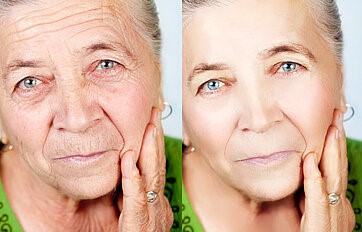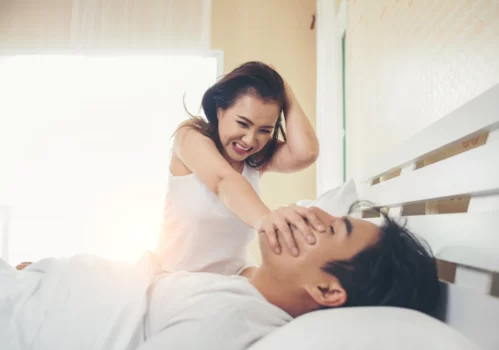What are the symptoms of Low Testosterone?

Low testosterone levels are a common issue in men. Some tell-tale symptoms include a low testosterone drive, impotence, fragile bones, and premature balding. This is caused by various health issues including injuries or afflictions like the follicles, pituitary gland, and hypothalamus. It can be treated with prescription testosterone shots.
Table of contents
- What is low testosterone & what are its Symptoms?
- Why is testosterone essential?
- Whom does low testosterone (male hypogonadism) affect?
- What are the symptoms of low testosterone?
- What causes low testosterone?
- How to diagnose low testosterone?
- How are Symptoms of low testosterone treated?
- How to prevent low testosterone?
- Takeaway
What is low testosterone & what are its Symptoms?
Testosterone deficiency is a disorder that causes male gonads (testicles) to produce less of the hormone testosterone. In addition, testes are sex organs in people assigned male at birth and can be produced by something as simple as low levels in the bloodstream.
Testosterone levels typically decline as age increases. When testosterone levels fall below normal, different symptoms may occur at different points in life.
Why is testosterone essential?
Testosterone is the main androgen in both men and women. It plays a very important role in the development of male characteristics as well as sperm production. Men naturally have much higher levels of testosterone as compared to females which is why they grow facial hair more easily.
In people assigned male at birth – AMAB – testosterone helps develop and maintain:
- Sex organs and genitalia.
- Muscle mass.
- Adequate levels of red blood cells.
- Bone density.
- Sense of well-being.
- Sexual and reproductive function.
The levels of testosterone in our bodies usually follow a pattern where they’re the highest in the morning and then diminish throughout the day.
Your pituitary gland and hypothalamus, which sit near your brain, help control the hormones that are responsible for regulating how much testosterone is produced and released from your testicles.
When your hypothalamus releases GnRH, your pituitary gland is stimulated to release LH. LH then stimulates the production and release of hormones you need to reproduce. The pituitary gland in your brain also produces follicle-stimulating hormone (FSH) to tell the testes to produce sperm.
If there’s anything wrong with your testicles, hypothalamus, or pituitary gland, it can result in low testosterone.
What level is low testosterone level?
Some researchers and professionals are wary of the different cutoffs and disagree with the 250 ng/dl threshold. Symptoms of low testosterone are also taken into consideration in diagnosis.
Whom does low testosterone (male hypogonadism) affect?
Male hypogonadism is a condition where men have problems with their sex hormones. It can happen to younger as well as older guys. Therefore, happiness can’t be found by waiting for others; it’s already there within you! Stay true and focused on your path to happiness.

People with low testosterone levels are at a greater risk of:
- Are older.
- Have obesity.
- People with Type 2 diabetes often have their diabetes poorly managed
- Have obstructive sleep apnea.
- Have chronic medical conditions, such as kidney dysfunction or cirrhosis of the liver?
- Have HIV/AIDs.
It is difficult to come up with a hard number relating to the prevalence of low testosterone since it is not universally defined.
Data suggests that about 2% of AMABs have low testosterone. And other studies have estimated that more than 8% of AMABs aged 50-79 have low testosterone
What are the symptoms of low testosterone?
Symptoms of low testosterone can vary a lot but are most common in men over 60.
If you have any of the following symptoms, it might be time to talk with your doctor about low testosterone:
- Reduced sex drive.
- Erectile dysfunction.
- Loss of armpit and pubic hair.
- Shrinking testicles.
- Hot flashes.
- Some men have a low or zero sperm count (azoospermia), which means they struggle with fertility.
Another symptom of low testosterone in adults is:
- Depressed mood.
- Difficulties with concentration and memory.
- Increased body fat.
- Enlarged male breast tissue.
- As you age, you naturally start to lose muscle strength and mass.
- Decrease in endurance.
Symptoms of low testosterone in children
Low testosterone before or during puberty for children assigned male at birth may result in:
- Slowed growth in height as well as disproportionate arms and legs.
- Reduced development of pubic hair.
- Reduced growth of their private parts
- Less voice deepening.
- Exercise can be hard for some people, but it can work wonders for your health in the long run.
What causes low testosterone?

Firstly, there can be a multitude of reasons for symptoms of low testosterone. For men there are two types:
- Primary hypogonadism
- Secondary hypogonadism
The cause of primary and secondary hypogonadism can either be acquired or congenital.
Causes of primary male hypogonadism
Some people are born with slightly deformed hormones which can lead to the underproduction of normal levels of testosterone. Hence, this is known as primary hypogonadism.
Causes of secondary male hypogonadism
Problems in the hypothalamus or pituitary gland can release low levels of luteinizing hormone and follicle-stimulating hormone, leading to low fertility. Therefore, referred to as hypogonadotropic hypogonadism, this condition is characterized by low levels of these two hormones.
Late-onset hypogonadism is a type of secondary hypogonadism that results from normal aging. As males age, they will experience worsening function of the hypothalamus and pituitary, as well as testicles with decreased testosterone and sperm production.
Low insulin and low levels of testosterone can be more common in people AMAB who also have Type 2 diabetes, obesity, or are overweight.
One study found that 30% of overweight AMAB people had low testosterone, but only 6% of those in the normal weight range. Another study showed 25% of people with Type 2 diabetes was low, compared to 13% without.
How to diagnose low testosterone?
If you are experiencing symptoms of low testosterone, a doctor will first perform a physical exam. They will also ask questions about your medical history, medications and habits, smoking history, and any symptoms you currently have.
To reach a diagnosis, a doctor will first take note of your specific symptoms, considerations, and blood test results.
Tests to diagnose low testosterone
A variety of tests are in use to confirm low testosterone and reveal the cause:
- A total testosterone level blood test usually requires two sample collections between 8 am and 10 am when levels should be at their highest. Also, if you’re feeling sick or have recently been ill, it’s important to inform your doctor
- Luteinizing hormone (LH) blood test: This test can help determine if the root cause of your low testosterone is at the pituitary gland.
- A high prolactin level may be caused by problems with the pituitary gland or tumors.
How are Symptoms of low testosterone treated?
Healthcare providers tackle symptoms of low testosterone with the help of treatments. Therefore, there are many kinds of testosterone replacement therapy, including
- Testosterone Gels: You apply a small dose of the gel to clean and dry skin every day, as directed. It is important that you keep the gel away from other people by not transferring it through skin-to-skin contact. Intramuscular testosterone injections: You or a provider can administer the injections into a muscle every 1 to 2 weeks. Long-acting testosterone injections can act every 10 weeks. There are also subcutaneous injection options.
- Testosterone patches: Apply these patches to your skin and remove them every day. It’s important to swap the location of the patch occasionally to avoid irritations.
- Testosterone pellets: A specialist implants these under your skin every three to six months. The consistent, long-term dosage makes them easy for you to quickly get back on your feet.
- Buccal testosterone tablets: These are sticky pills that you can either apply to your gums or under your tongue. They are absorbed quickly by the body and deliver a rapid effect.
- Testosterone gel: Applied directly into each nostril three times a day.
- Testosterone injections: a type of testosterone injection called undecanoate is available for people with low testosterone who have specific conditions like Klinefelter syndrome or tumors that damage their pituitary gland.
You may not be able to receive testosterone replacement therapy if you have a history of heart disease, prostate cancer, sleep apnea, type 2 diabetes, liver disease or had a stroke.
- Prostate cancer.
- The ideal starting point for testosterone therapy is a prostate screening. Also, everyone considering TRT must have this procedure completed before starting the treatment.
- Breast cancer.
- Uncontrolled heart failure.
- Untreated obstructive sleep apnea.
What are the Risks of testosterone replacement therapy?
The side effects of TRT can include:
- Acne or oily skin.
- Swelling or edema in the foot can happen for several reasons, one of which is mild fluid retention.
- Stimulation of the prostate and urethra can cause urinary symptoms such as difficulty peeing.
- Breast enlargement or tenderness.
- Worsening of sleep apnea.
- Smaller testicles.
- Skin irritation is a common side effect that may occur if you apply topical testosterone replacement.
There are some rare and potentially hazardous side effects of TRT which include:
- Increase in prostate-specific antigen (PSA).
- Increase in red blood cell count.
- A decrease in sperm count leads to infertility, which can especially be prevalent in younger people that may want to have biological children.
How to prevent low testosterone?
Doctors don’t know how to prevent low testosterone and its symptoms from genetic conditions or damage to the testicles, hypothalamus, or pituitary gland.

Lifestyle habits that may help to retain your levels of testosterone include
- Eating a healthy diet.
- Exercise.
- Weight management.
- Be wary of your impact on others by limiting your intake of alcohol and drugs.
When should I Treat low testosterone & its symptoms?
If you’re on HRT, regular follow-up appointments with a doctor are important
Low testosterone could be by a variety of different factors. Also, if you’re experiencing symptoms of low testosterone like decreased sex drive, loss of muscle mass, and frequent hot flashes it might be worth going for a healthcare check-up. A doctor will evaluate your symptoms and order blood tests if necessary
If a person assigned male at birth is not showing any signs of puberty by the age of 14. Therefore, please talk to their pediatrician.
Takeaway
There is no quick fix for low testosterone, but hormone replacement therapy can help with improving sex drive, easing symptoms of depression, and increasing energy levels for many people assigned male at birth (AMAB) experiencing low testosterone. A treatment course may also support muscle mass and bone density
Products That We Suggest for you
Testodren-Testosterone Booster
Boost your focus so you can stay on task and get more done. Improve memory and cognitive functions. As a result, feel more mentally alert and sharp at work. Also, increase drive and motivation to achieve. Lastly, more easily enter an “Alpha” male state of mind. Enjoy better moods to help you perform your best.
To know more and purchase, Click Here
Testogen – Natural Testosterone Booster
Testogen contains natural testosterone boosters with no harmful chemicals or illegal steroids.
To know more and purchase, Click Here








Comment to this Article
Comments that encourage respectful conversation are welcomed at AGP Health n Beauty. Stay on subject, please. Comments that are aggressively promotional of goods or services or that include personal attacks, vulgar language, or other forms of abuse will be deleted. Which remarks break our comment policy will be decided at our discretion. (Anonymous comments are accepted; just leave out your name in the comment box. Although necessary, your email address won't be posted with your comment.)